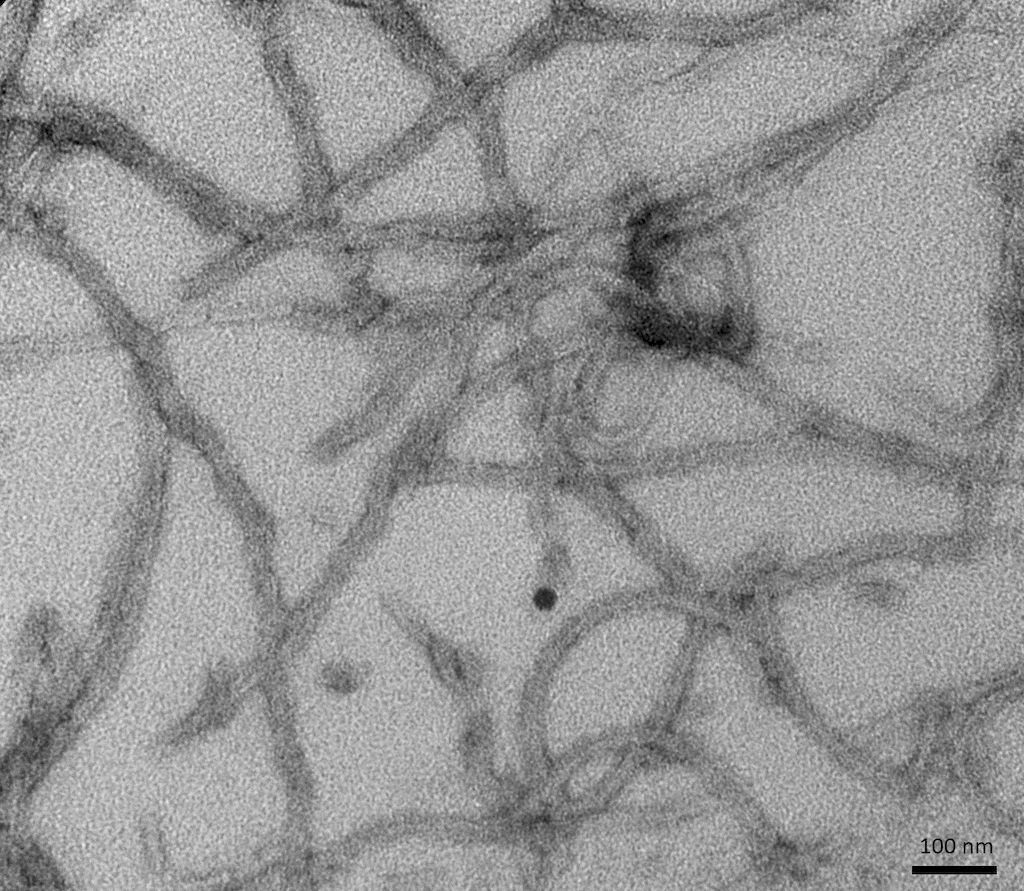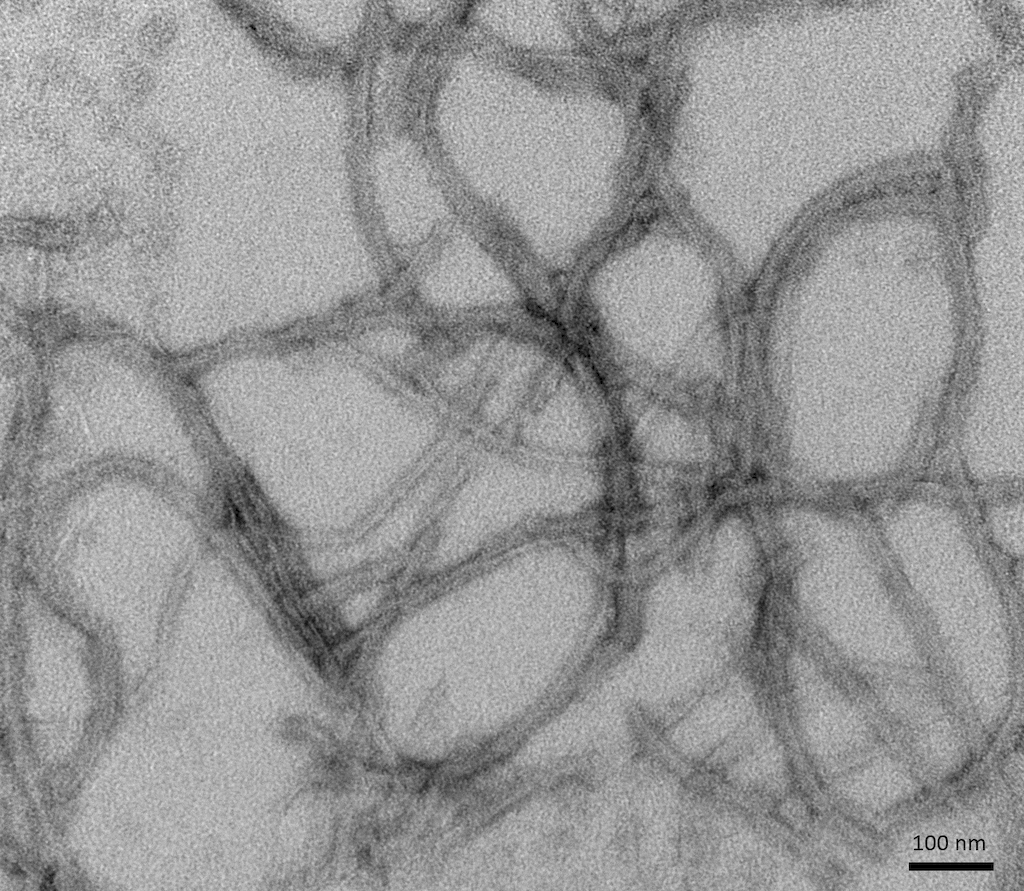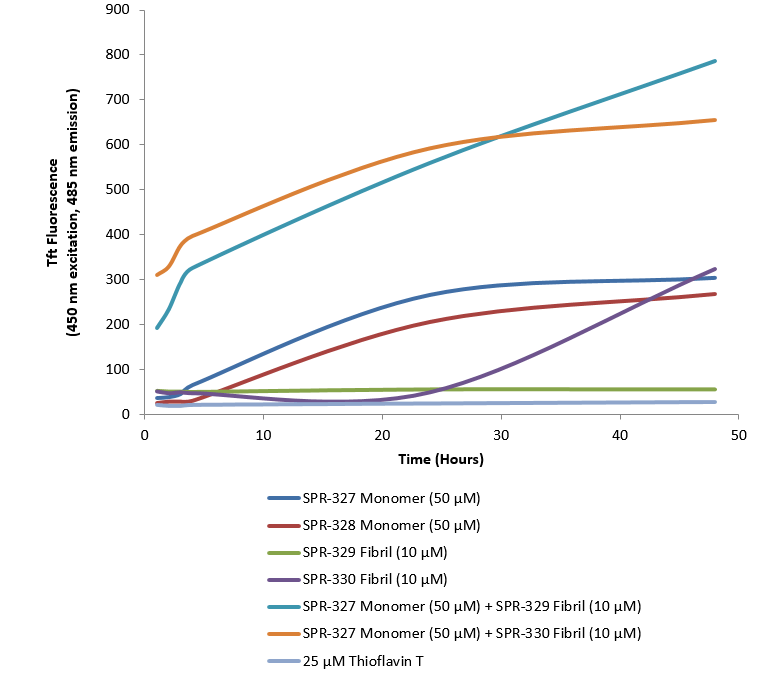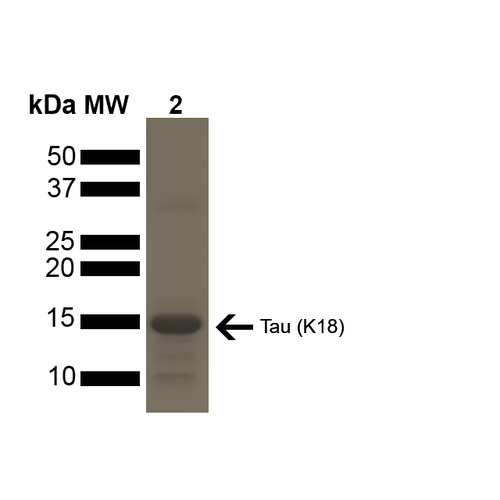SPR-330B SPR-330C SPR-330E
Tau (K18) P301L Mutant Pre-formed Fibrils
Stressmarq Biosciences
Image

Image

Image

Image

DESCRIPTION
Human Recombinant Tau (K18) P301L Mutant Protein Pre-formed Fibrils
DETAILS
- Nature: Recombinant
- Purity: >95%
- Target: Tau (K18) P301L Mutant
- Category: Protein
- Conjugate: No tag
- References: 1. www.alz.org/alzheimers-dementia/facts-figures 2. Alzheimer, A. Über eine eigenartige Erkrankung der Hirnrinde. Allg. Z. Psychiatr. Psych.-Gerichtl. Med. 64, 146–148 (1907) 3. Matsumoto, G. et al. (2018). Int J Mol Sci. 19, 1497. 4. Goedert, M. and Spillantini, M. G. (2017). Mol Brain. 10:18. 5. Guo, J. and Lee, M.Y. (2013). FEBS Lett. 587(6): 717-723. 6. Alberici, A. et al. (2004). J Neurol Neurosurg Psychiatry. 75:1607-1610.
- Applications: WB | SDS-PAGE | In vivo assay | In vitro assay
- Field of Use: Not for use in humans. Not for use in diagnostics or therapeutics. For research use only.
- Protein Size: ~15.1 kDa
- Purification: Ion-exchange Purified
- Concentration: Lot/batch specific. See included datasheet.
- Protein Length: Partial
- Research Areas: Alzheimer's Disease | Axon Markers | Cell Markers | Cell Signaling | Cytoskeleton | Microtubules | MT Associated Proteins | Neurodegeneration | Neuron Markers | Neuroscience | Tangles & Tau
- Storage Buffer: 10 mM HEPES, 100 mM NaCl pH 7.4
- Alternative Names: Tau PFFs, Tau PFF, Tau protein Pre-formed Fibrils, Tau aggregates, microtubule-associated protein Tau, MAPT, MAP, microtubule-associated protein, Paired Helical Filament-Tau, Phf-Tau, Neurofibrillary Tangle Protein, G Protein Beta1/Gamma2 Subunit-Interacting Factor 1, Isoform 4, tubulin-associated unit
- Cite This Product: Human Recombinant Tau Protein (StressMarq Biosciences Inc., Victoria BC CANADA, Catalog # SPR-330)
- Expression System: E. coli
- Species Full Name: Human
- Amino Acid Sequence: SRLQTAPVPM PDLKNVKSKI GSTENLKHQP GGGKVQIINK KLDLSNVQSK CGSKDNIKHVLGGGSVQIVY KPVDLSKVTS KCGSLGNIHH KPGGGQVEVK SEKLDFKDRV QSKIGSLDNI THVPGGGNKK IETHKLTFRE
- Biological Activity: Thioflavin T emission curve shows increased fluorescence (correlated to tau protein fibrillation) when active tau PFFs are combined with active tau monomers.
- Storage Temperature: -80ºC
- Shipping Temperature: Dry Ice. Shipping note: Product will be shipped separately from other products purchased in the same order.
- Cellular Localization: Cytoplasm | Axolemma | Axolemma Plasma Membrane | Axon | Cell Body | Cell membrane | Cytoplasmic Ribonucleoprotein Granule | Cytoplasmic Side | Cytoskeleton | Cytosol | Dendrite | Growth cone | Microtubule | Microtubule Associated Complex | Neurofibrillary Tangle | Neuronal Cell Body | Nuclear Periphery | Nuclear Speck | Nucleus | Peripheral membrane protein | Plasma Membrane | Tubulin Complex
- Scientific Background: Alzheimer’s Disease (AD) is the most common neurodegenerative disease, affecting 10% of seniors over the age of 65 (1). It was named after Alois Alzheimer, a German scientist who discovered tangled bundles of fibrils where neurons had once been in the brain of a deceased patient in 1907 (2). Tau (tubulin-associated unit) is normally located in the axons of neurons where it stabilizes microtubules. Tauopathies such as AD are characterized by neurofibrillary tangles containing hyperphosphorylated tau fibrils (3). There are six isoforms of tau in the adult human brain: three with four repeat units (4R) and three with three repeat units (3R) (4). K18 is a truncated form of human tau containing only the 4 microtubule binding repeats (5). P301L (PL) is a mutation where proline is replaced by leucine at codon 301 of tau, and has been linked to frontotemporal dementia (6).
- Certificate of Analysis: Certified >95% pure using SDS-PAGE analysis.
Equivalent Items
| ... Loading